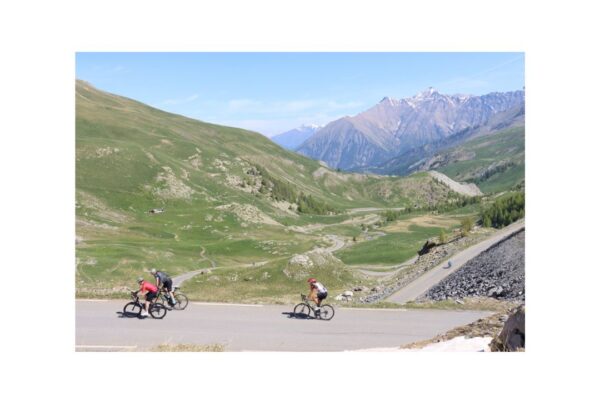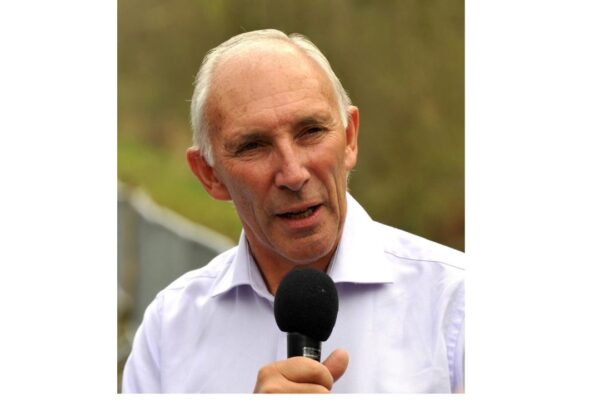Editor’s Note: To write this article, I collaborated with Petr Minarik, the Founder of Cyclists Hub. It’s an insightful site that offers detailed and balanced review of all things cycling related.
Now, after the bikes have been cleaned, the dust has settled, and the injuries have been attended to, I thought it would be worth reflecting on what turned out to be the fastest Paris-Roubaix in history.
The decisive move of the race happened on the cobbled sector, as we expected it would. However, what we didn’t expect is that it would be sector 13, some 60km from the finish.
With 56.7 km remaining, Mathieu van der Poel accelerated. No one could keep pace. He simply rode away from his competitors, who were unable to match his high tempo. It was spectacular to watch. However, it must have been disheartening for those riders watching this unfold in front of them to see a fellow competitor simply riding away with no one capable of responding.
Petr Minarik, founder of Cyclists Hub, a website that specializes in product reviews and data-driven articles, noted that this was the fastest Paris-Roubaix with an average speed of 47.80 km/h. This was an increase of 0.96 km/h from the previous year when Mathieu van der Poel averaged 46.84 km/h.
Yes, the majority of the race was with a tailwind, but still, when the average speeds are plotted on a graph, the general trend is that the speeds are increasing. So why is this, and what can it be attributed to?

Improvements in aerodynamics
There has been an increase in the focus on aerodynamics and its benefits. In addition to tuning riding positions in wind tunnels and on velodromes, equipment is also being optimized. This doesn’t just stop at the bike (aero frames, integrated wiring, deep section wheels) but continues with aero helmets, experiments with different tire widths and pressures, etc. Recently, clothing has also undergone significant improvements, being made of more aerodynamic fabrics and thus saving valuable watts. To accompany the new aerodynamic skin suits, socks, and gloves have been scrutinized and are now part of the package.
Some riders have also experimented with leaning shifters and narrower handlebars, which resulted in the sport’s governing body the Union Cycliste Internationale (UCI) stepping in and banning this practice due to the safety.
Improvement in bikes
The bikes do play a part, there has been attention paid producing more aero frames, integrated wiring, aerodynamic wheels, and tire width. However, what is interesting is the the trend of some brands dropping the production of 2 types of frames (lightweight and aero) and starting to produce a sort of hybrid (e.g. Specialized SL7).
One of the controversial topics is also the introduction of disc brakes. Leaving aside the aerodynamics itself, their efficiency allows riders to take corners at higher speeds. They also make it easier to use wider tires, which are both more comfortable and provide more grip.
Other improvements with less impact on speed include electronic shifting and a higher number of gears (2×12 vs. 2×11). On the other hand, some teams are experimenting with single gearing (1×12), which results in lower overall weight and marginal improvements in aerodynamics.
Improved training and nutrition
Training methods have evolved along with nutrition. Many young riders are now accustomed to power meters, having trained with them, and they are now much more widely used by average cyclists. When this is combined with heart rate monitors and applications like WHOOP, TrainingPeaks and personal coaches, training has become optimised, allowing athletes to get the most out of their body. The overall net impact that the physical level of the entire field has increased which has added to the increase in speeds.
With the evolution of training methods, so has the approach to nutrition. Historically, it was common to consume 80g of carbohydrates per hour, and this has increased to 100g, with some athletes consuming up to 130g per hour.
A notable example of the increased understanding in nutrition was in the 2018 Giro d’Italia. On stage 19, Chris Froome attacked with 80km remaining in a mountainous stage. His team, Team Sky has calculated exactly when food would be required and positioned people at specific points to provide him with the necessary gels and drink to fuel him during this attack.
Evolution of racing style
As a consequence of riders being better trained and fueled, the style of racing has evolved. This view is widely held by experienced professionals such as Tour de France winner Geraint Thomas and teammate Luke Rowe. Racing often starts at kilometer zero, when many riders try to get into the breakaway. This is evidenced, for example, by the first hour of 2024 Paris-Roubaix, which was ridden at an average of 54.67 km/h. Geraint Thomas also noted how even on the descents, the speed has increased.
This seems to have ended the old-fashioned style of racing, in which the first few hours were ridden “at ease,” and the race was decided in the last two hours. Riders are able to sustain the pace for longer because they are better trained and fuelled.
Summing up
Sir David Brailsford’s approach to “marginal gains” has filtered throughout the sport, and it’s now commonplace for teams to focus on minor details. These minor details add up, and consequently, the speeds being raced have increased significantly year on year, as witnessed in the recent Paris-Roubaix race.
It will be interesting to see how average speeds evolve over the coming decades. Will we see a time when classic averages exceed 50 km/h? Time will tell.



